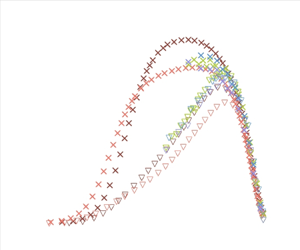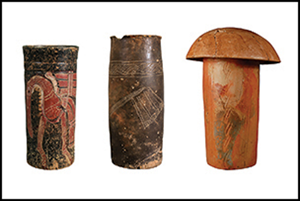Refine listing
Actions for selected content:
1416829 results in Open Access
The credit-augmented Divisia aggregates and the monetary business cycle
-
- Journal:
- Macroeconomic Dynamics / Volume 29 / 2025
- Published online by Cambridge University Press:
- 05 March 2024, e4
-
- Article
-
- You have access
- Open access
- HTML
- Export citation
The Fertile Earth and the Ordered Cosmos: Reflections on the Newark Earthworks and World Heritage. M. Elizabeth Weiser, Timothy R. W. Jordan, and Richard D. Shiels, editors. 2023. Ohio State University Press, Columbus. $24.95 (paperback), ISBN 978-0-8142-5870-5. $24.95 (e-book), ISBN 978-0-8142-8286-1.
-
- Journal:
- American Antiquity / Volume 89 / Issue 2 / April 2024
- Published online by Cambridge University Press:
- 04 March 2024, pp. 336-337
- Print publication:
- April 2024
-
- Article
- Export citation
Consistent outer scaling and analysis of adverse pressure gradient turbulent boundary layers
-
- Journal:
- Journal of Fluid Mechanics / Volume 982 / 10 March 2024
- Published online by Cambridge University Press:
- 04 March 2024, A17
-
- Article
- Export citation
ANCIENT GREEK CURSE TABLETS - (J.L.) Lamont In Blood and Ashes. Curse Tablets and Binding Spells in Ancient Greece. Pp. xxviii + 404, ills, maps. New York: Oxford University Press, 2023. Cased, £71, US$110. ISBN: 978-0-19-751778-9.
-
- Journal:
- The Classical Review / Volume 74 / Issue 2 / October 2024
- Published online by Cambridge University Press:
- 04 March 2024, pp. 385-387
- Print publication:
- October 2024
-
- Article
- Export citation
The Postcolonial Uncanny in “Toba Tek Singh”
-
- Journal:
- Cambridge Journal of Postcolonial Literary Inquiry / Volume 11 / Issue 1 / January 2024
- Published online by Cambridge University Press:
- 04 March 2024, pp. 66-73
-
- Article
-
- You have access
- Open access
- HTML
- Export citation
Invariant measures and large deviation principles for stochastic Schrödinger delay lattice systems
- Part of
-
- Journal:
- Proceedings of the Royal Society of Edinburgh. Section A: Mathematics , First View
- Published online by Cambridge University Press:
- 04 March 2024, pp. 1-42
-
- Article
- Export citation
The impact of non-nutritive sweeteners on fertility, maternal and child health outcomes: a review of human and animal studies
- Part of
-
- Journal:
- Proceedings of the Nutrition Society / Volume 83 / Issue 4 / December 2024
- Published online by Cambridge University Press:
- 04 March 2024, pp. 280-292
-
- Article
-
- You have access
- Open access
- HTML
- Export citation
Prevalence and clinical significance of late gadolinium enhancement in children and adolescents with hypertrophic cardiomyopathy: a systematic review and meta-analysis
-
- Journal:
- Cardiology in the Young / Volume 34 / Issue 7 / July 2024
- Published online by Cambridge University Press:
- 04 March 2024, pp. 1456-1465
-
- Article
- Export citation
Old Epistemic Vices and Islamophobia in Martha Nussbaum's The New Religious Intolerance
-
- Article
-
- You have access
- Open access
- HTML
- Export citation
Bifurcations and pattern formation in a host–parasitoid model with nonlocal effect
- Part of
-
- Journal:
- Proceedings of the Royal Society of Edinburgh. Section A: Mathematics , First View
- Published online by Cambridge University Press:
- 04 March 2024, pp. 1-40
-
- Article
- Export citation
Waka’ Stela 44 and the Early Classic Kaan hegemony
-
- Journal:
- Ancient Mesoamerica / Volume 35 / Issue 2 / Summer 2024
- Published online by Cambridge University Press:
- 04 March 2024, pp. 525-537
- Print publication:
- Summer 2024
-
- Article
-
- You have access
- Open access
- HTML
- Export citation
The double jeopardy of low family income and negative emotionality: The family stress model revisited
-
- Journal:
- Development and Psychopathology / Volume 37 / Issue 2 / May 2025
- Published online by Cambridge University Press:
- 04 March 2024, pp. 615-632
-
- Article
-
- You have access
- Open access
- HTML
- Export citation
ROMAN VIEWS ON TIME AND SPACE - (R.J.A.) Talbert World and Hour in Roman Minds. Exploratory Essays. Pp. xviii + 308, ills, maps. New York: Oxford University Press, 2023. Cased, £71, US$110. ISBN: 978-0-19-760634-6.
-
- Journal:
- The Classical Review / Volume 74 / Issue 2 / October 2024
- Published online by Cambridge University Press:
- 04 March 2024, pp. 623-625
- Print publication:
- October 2024
-
- Article
- Export citation
Quiet Strength: Kurdish Women Kolbars and the Feminization of Poverty
-
- Journal:
- Iranian Studies / Volume 57 / Issue 2 / April 2024
- Published online by Cambridge University Press:
- 04 March 2024, pp. 335-339
- Print publication:
- April 2024
-
- Article
- Export citation
RHETORIC AND PHILOSOPHY IN CICERO - (N.) Gilbert, (M.) Graver, (S.) McConnell (edd.) Power and Persuasion in Cicero's Philosophy. Pp. x + 268. Cambridge: Cambridge University Press, 2023. Cased, £85, US$110. ISBN: 978-1-009-17033-8.
-
- Journal:
- The Classical Review / Volume 74 / Issue 2 / October 2024
- Published online by Cambridge University Press:
- 04 March 2024, pp. 462-464
- Print publication:
- October 2024
-
- Article
- Export citation
Foreign aromatics, olfactory culture, and scent connoisseurship in late medieval China
-
- Journal:
- Journal of the Royal Asiatic Society / Volume 34 / Issue 2 / April 2024
- Published online by Cambridge University Press:
- 04 March 2024, pp. 435-453
- Print publication:
- April 2024
-
- Article
-
- You have access
- Open access
- HTML
- Export citation
A case of Carvajal syndrome presenting with dilated cardiomyopathy
-
- Journal:
- Cardiology in the Young / Volume 34 / Issue 5 / May 2024
- Published online by Cambridge University Press:
- 04 March 2024, pp. 1131-1133
-
- Article
- Export citation
Potting communities and conservatism in the Purépecha empire at Angamuco, Michoacán, Mexico
-
- Journal:
- Ancient Mesoamerica / Volume 35 / Issue 2 / Summer 2024
- Published online by Cambridge University Press:
- 04 March 2024, pp. 588-597
- Print publication:
- Summer 2024
-
- Article
-
- You have access
- Open access
- HTML
- Export citation
DIVINATION FROM A COGNITIVE PERSPECTIVE - (G.) Frigerio A Cognitive Analysis of the Main Apolline Divinatory Practices. Decoding Divination. Pp. xii + 198, ills. London and New York: Routledge, 2023. Cased, £120, US$160. ISBN: 978-1-032-41152-1.
-
- Journal:
- The Classical Review / Volume 74 / Issue 2 / October 2024
- Published online by Cambridge University Press:
- 04 March 2024, pp. 612-614
- Print publication:
- October 2024
-
- Article
- Export citation
Residue analysis suggests ritual use of tobacco at the ancient Mesoamerican city of Cotzumalhuapa, Guatemala
-
- Article
-
- You have access
- Open access
- HTML
- Export citation




















